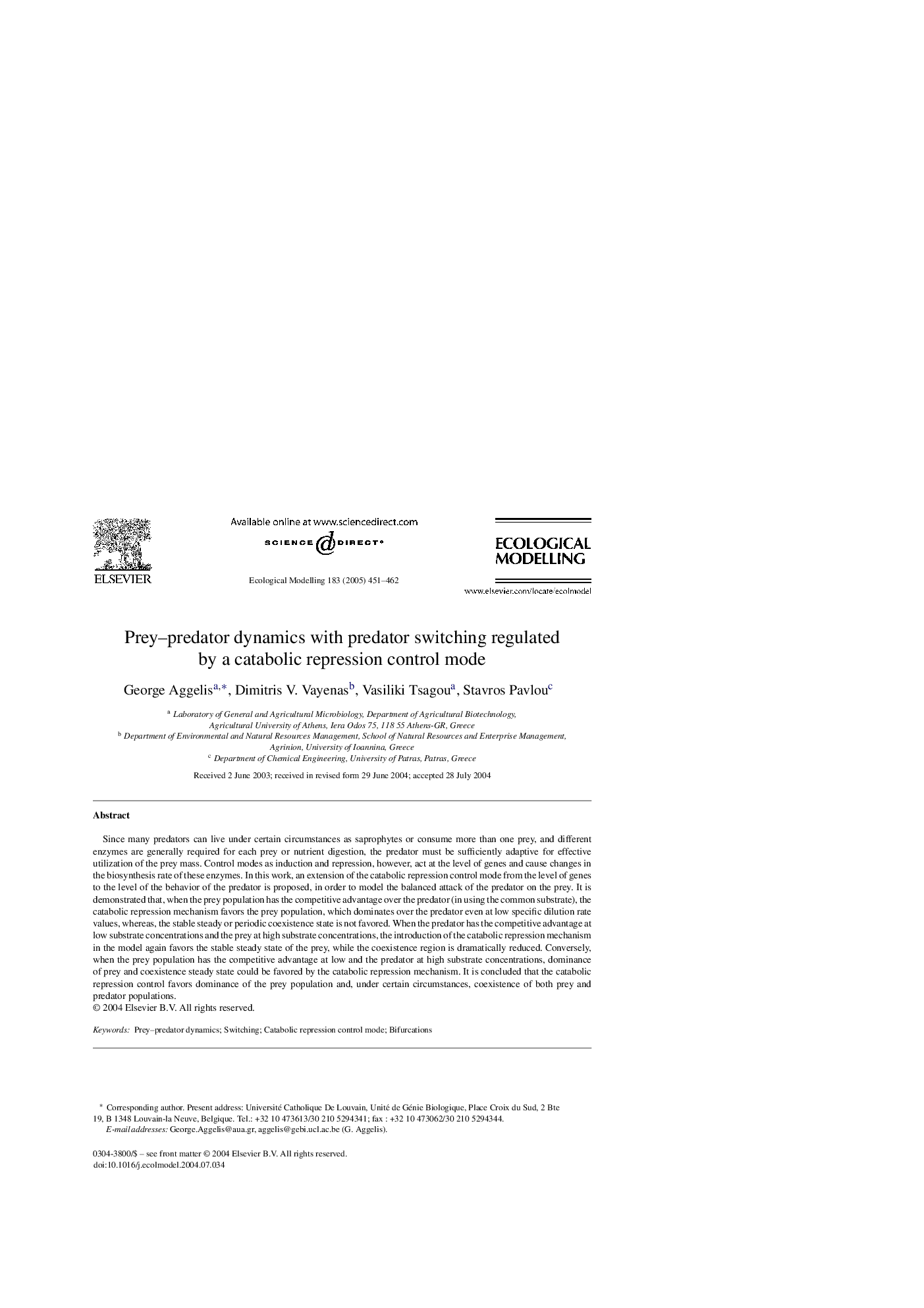| Article ID | Journal | Published Year | Pages | File Type |
|---|---|---|---|---|
| 9443558 | Ecological Modelling | 2005 | 12 Pages |
Abstract
Since many predators can live under certain circumstances as saprophytes or consume more than one prey, and different enzymes are generally required for each prey or nutrient digestion, the predator must be sufficiently adaptive for effective utilization of the prey mass. Control modes as induction and repression, however, act at the level of genes and cause changes in the biosynthesis rate of these enzymes. In this work, an extension of the catabolic repression control mode from the level of genes to the level of the behavior of the predator is proposed, in order to model the balanced attack of the predator on the prey. It is demonstrated that, when the prey population has the competitive advantage over the predator (in using the common substrate), the catabolic repression mechanism favors the prey population, which dominates over the predator even at low specific dilution rate values, whereas, the stable steady or periodic coexistence state is not favored. When the predator has the competitive advantage at low substrate concentrations and the prey at high substrate concentrations, the introduction of the catabolic repression mechanism in the model again favors the stable steady state of the prey, while the coexistence region is dramatically reduced. Conversely, when the prey population has the competitive advantage at low and the predator at high substrate concentrations, dominance of prey and coexistence steady state could be favored by the catabolic repression mechanism. It is concluded that the catabolic repression control favors dominance of the prey population and, under certain circumstances, coexistence of both prey and predator populations.
Keywords
Related Topics
Life Sciences
Agricultural and Biological Sciences
Ecology, Evolution, Behavior and Systematics
Authors
George Aggelis, Dimitris V. Vayenas, Vasiliki Tsagou, Stavros Pavlou,
